-
 Bitcoin
Bitcoin $81,725.8617
6.04% -
 Ethereum
Ethereum $1,595.4823
7.95% -
 Tether USDt
Tether USDt $0.9993
-0.02% -
 XRP
XRP $1.9994
9.53% -
 BNB
BNB $577.1239
3.55% -
 USDC
USDC $0.9999
-0.01% -
 Solana
Solana $114.0227
6.99% -
 Dogecoin
Dogecoin $0.1557
6.44% -
 TRON
TRON $0.2411
4.90% -
 Cardano
Cardano $0.6213
9.35% -
 UNUS SED LEO
UNUS SED LEO $9.4123
2.93% -
 Chainlink
Chainlink $12.3356
8.60% -
 Avalanche
Avalanche $17.9497
9.52% -
 Toncoin
Toncoin $2.9914
-1.61% -
 Stellar
Stellar $0.2336
6.25% -
 Hedera
Hedera $0.1694
12.26% -
 Shiba Inu
Shiba Inu $0.0...01198
9.35% -
 Sui
Sui $2.1355
9.15% -
 MANTRA
MANTRA $6.7139
7.48% -
 Bitcoin Cash
Bitcoin Cash $293.9383
8.01% -
 Litecoin
Litecoin $73.7326
3.70% -
 Polkadot
Polkadot $3.5045
1.98% -
 Dai
Dai $0.9999
-0.01% -
 Bitget Token
Bitget Token $4.2721
4.17% -
 Ethena USDe
Ethena USDe $0.9987
0.00% -
 Hyperliquid
Hyperliquid $14.0933
12.91% -
 Pi
Pi $0.5941
5.51% -
 Monero
Monero $204.5106
5.17% -
 Uniswap
Uniswap $5.1756
7.13% -
 OKB
OKB $53.3130
3.39%
How to generate a Bitcoin address in Mycelium wallet?
Generate new Bitcoin addresses in Mycelium for each transaction to enhance privacy and security; always verify addresses carefully to avoid irreversible errors.
Apr 01, 2025 at 07:35 pm

Understanding Bitcoin Addresses and Mycelium
Before diving into the process, let's clarify what a Bitcoin address is and its role within Mycelium. A Bitcoin address is essentially a unique identifier, like a bank account number, used to receive Bitcoin. It's a string of alphanumeric characters that allows others to send you BTC. Mycelium, a popular and secure Bitcoin wallet, provides a straightforward method for generating these addresses. Understanding this distinction is crucial for secure Bitcoin management.
Generating a New Bitcoin Address in Mycelium Wallet
Mycelium offers a simple method to generate new addresses. This is important for maintaining privacy and security best practices. Using a fresh address for each transaction reduces the risk of linking multiple transactions to a single identity. Here's how to do it:
Open the Mycelium Wallet: Launch the Mycelium application on your device. Ensure you have the latest version installed for optimal security and functionality.
Navigate to the "Receive" Screen: Look for the icon that typically represents an incoming transaction, often depicted as an arrow pointing towards a wallet. This screen displays your existing Bitcoin addresses.
Generate a New Address: Mycelium usually has a button or option labeled "New Address," "Generate Address," or something similar. Tap this button.
Verify the Address: After generation, the wallet will display the newly created address. Double-check the address for accuracy before sharing it with anyone. A single incorrect character can result in the loss of your funds.
Save or Share (Cautiously): You can either save this new address for future reference or share it immediately with the sender. Remember to always verify the recipient's address before sending Bitcoin. Mistakes here are irreversible.
Understanding Different Address Types in Mycelium
While the process is straightforward, it's important to understand that Mycelium, like other wallets, might use different address types based on your settings and the underlying Bitcoin network. These differences generally relate to the level of privacy and transaction speed. You may not directly select the type, but understanding the implications is crucial.
SegWit Addresses (bech32): These addresses start with "bc1" and are generally preferred due to their improved efficiency and lower transaction fees. Mycelium likely defaults to this type.
Legacy Addresses (P2PKH): These older addresses begin with "1" and are still functional, but they are less efficient and may incur higher fees. Mycelium may offer these as an option, though they are generally less recommended.
Nested SegWit (P2SH-SegWit): These addresses start with "3" and offer a compromise between legacy addresses and SegWit addresses. The availability of this type depends on your Mycelium version and settings.
Security Best Practices When Using Bitcoin Addresses
Always prioritize security when managing your Bitcoin addresses. Here are some critical steps:
Use a Strong Password: Choose a complex and unique password for your Mycelium wallet. Avoid easily guessable passwords.
Enable Two-Factor Authentication (2FA): If available, enable 2FA for an extra layer of security. This adds an additional verification step beyond your password.
Keep Your Software Updated: Regularly update your Mycelium wallet to benefit from the latest security patches and bug fixes.
Beware of Phishing Scams: Be cautious of suspicious emails or websites that ask for your Mycelium wallet details or Bitcoin addresses. Mycelium will never request this information directly.
Verify Addresses Carefully: Always double-check the address you're sending Bitcoin to. Sending to the wrong address is irreversible.
Frequently Asked Questions
Q: Can I reuse a Bitcoin address?
A: Yes, you can reuse a Bitcoin address. However, it's generally recommended to use a fresh address for each transaction to enhance your privacy.
Q: What happens if I generate too many addresses?
A: Generating many addresses doesn't directly harm your wallet. However, managing a large number of addresses can become cumbersome. It's best to generate addresses as needed.
Q: Is it safe to generate addresses on a public Wi-Fi network?
A: It's generally not recommended to generate addresses or conduct any sensitive cryptocurrency transactions on a public Wi-Fi network due to potential security risks.
Q: My Mycelium wallet isn't generating new addresses. What should I do?
A: Try restarting your device and the Mycelium app. If the problem persists, check for updates or contact Mycelium support.
Q: Are all Bitcoin addresses generated in Mycelium the same type?
A: Not necessarily. The type of address (bech32, legacy, etc.) may depend on your wallet settings and the Bitcoin network's capabilities. Mycelium usually defaults to the most secure and efficient option.
Q: What should I do if I accidentally share my Bitcoin address with the wrong person?
A: There's no way to directly recover the funds. The best course of action is to immediately generate a new address and inform the recipient not to send any Bitcoin to the compromised address.
Q: How can I be sure the address I generated in Mycelium is valid?
A: You can't definitively validate an address yourself. The best way to ensure validity is to test sending a small amount of Bitcoin to the address. If the transaction is successful, the address is valid. However, always exercise caution when testing with real funds.
Disclaimer:info@kdj.com
The information provided is not trading advice. kdj.com does not assume any responsibility for any investments made based on the information provided in this article. Cryptocurrencies are highly volatile and it is highly recommended that you invest with caution after thorough research!
If you believe that the content used on this website infringes your copyright, please contact us immediately (info@kdj.com) and we will delete it promptly.
- Bitcoin (BTC 0.67%) is inherently an outsider's challenge to the traditional financial system
- 2025-04-10 18:35:14
- Auradine Launches Teraflux AH3880 Bitcoin Mining Rig Amidst U.S.-China Trade Tensions
- 2025-04-10 18:35:14
- CDARI Partners with SFT Protocol to Bring Blockchain to E-commerce
- 2025-04-10 18:30:13
- After a Dramatic Shake-up, Realms of Alurya (RoA) Is Officially Parting Ways with Treasure and Migrating to the Ronin Network
- 2025-04-10 18:30:13
- Magic Eden Acquires Slingshot, the Decentralised Trading App, to Expand Its Footprint Beyond NFTs
- 2025-04-10 18:25:13
- Bitcoin surged above $84,000 after Donald Trump flipped the global tariff plans over his head
- 2025-04-10 18:25:13
Related knowledge
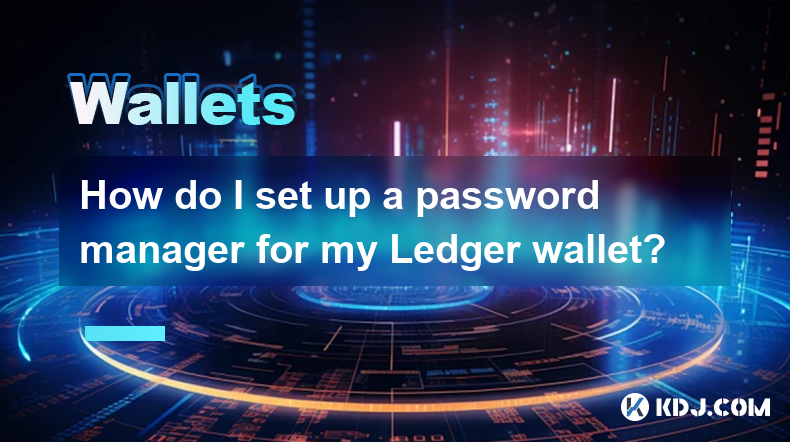
How do I set up a password manager for my Ledger wallet?
Apr 10,2025 at 11:50am
Setting up a password manager for your Ledger wallet is an essential step in enhancing the security of your cryptocurrency assets. A password manager helps you generate, retrieve, and keep track of complex passwords, ensuring that your Ledger wallet remains secure. In this article, we will guide you through the process of setting up a password manager s...
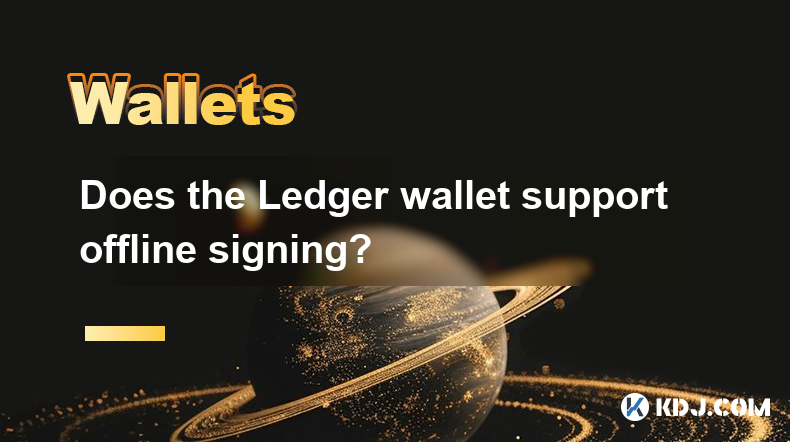
Does the Ledger wallet support offline signing?
Apr 09,2025 at 04:49am
Introduction to Ledger Wallet and Offline SigningThe Ledger wallet is a popular hardware wallet used by cryptocurrency enthusiasts to securely store their digital assets. One of the key features that users often inquire about is offline signing. Offline signing, also known as cold signing, is a security measure that allows users to sign transactions wit...
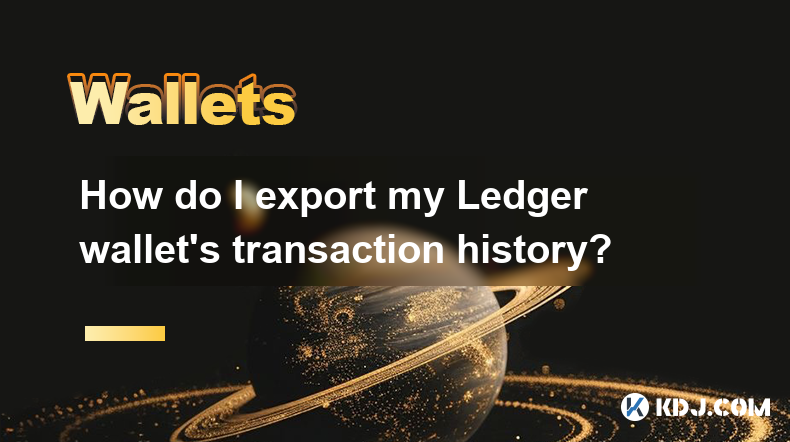
How do I export my Ledger wallet's transaction history?
Apr 10,2025 at 10:15am
Exporting your Ledger wallet's transaction history can be a crucial step for managing your cryptocurrency assets effectively. Whether you need this data for tax purposes, portfolio tracking, or simply for record-keeping, understanding how to access and export this information is essential. In this article, we will guide you through the process of export...
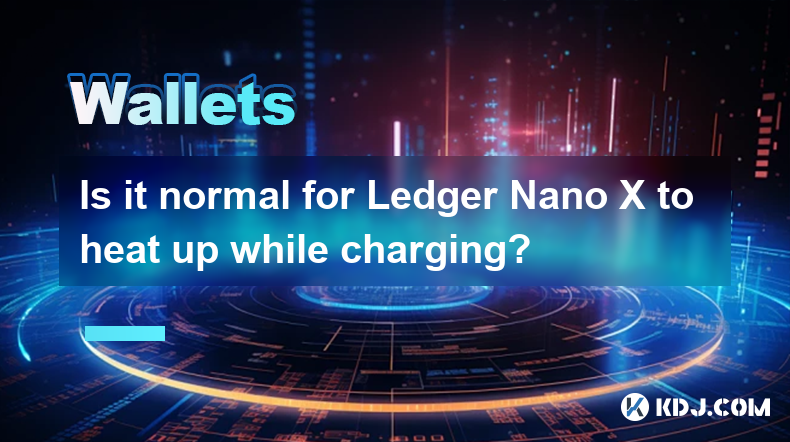
Is it normal for Ledger Nano X to heat up while charging?
Apr 09,2025 at 04:01pm
Is it normal for Ledger Nano X to heat up while charging? When using a hardware wallet like the Ledger Nano X, it's common for users to have concerns about the device's behavior, especially when it comes to heat generation during charging. This article will delve into the reasons behind the Ledger Nano X heating up while charging, whether it's normal, a...
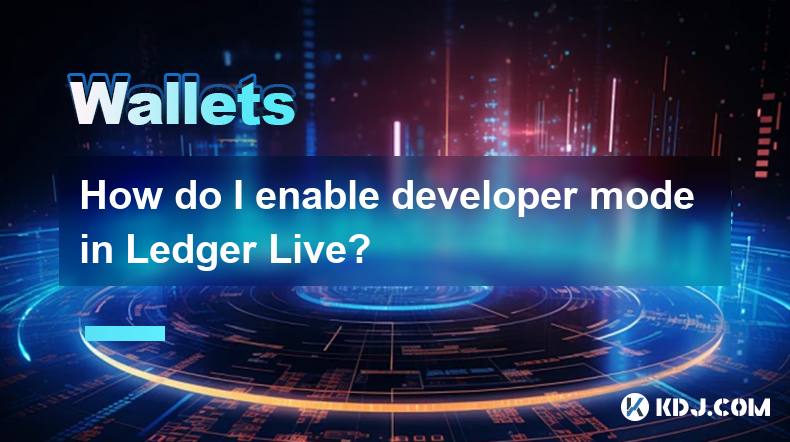
How do I enable developer mode in Ledger Live?
Apr 10,2025 at 05:49am
Enabling developer mode in Ledger Live can be a useful feature for advanced users who want to access experimental features or test new functionalities. This guide will walk you through the process of enabling developer mode in Ledger Live, ensuring you understand each step thoroughly. Understanding Developer ModeDeveloper mode in Ledger Live allows user...
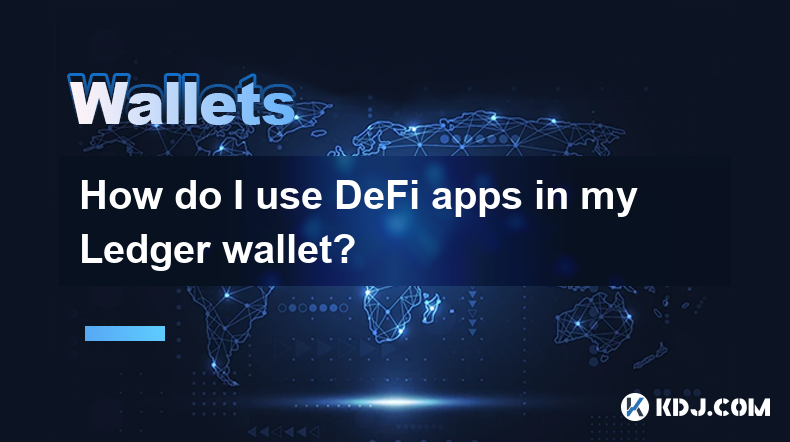
How do I use DeFi apps in my Ledger wallet?
Apr 10,2025 at 11:28am
Using DeFi apps with your Ledger wallet allows you to interact with decentralized finance platforms securely. This guide will walk you through the process of setting up and using DeFi apps with your Ledger device, ensuring your assets remain safe while you explore the world of DeFi. Setting Up Your Ledger Wallet for DeFiBefore you can use DeFi apps with...

How do I set up a password manager for my Ledger wallet?
Apr 10,2025 at 11:50am
Setting up a password manager for your Ledger wallet is an essential step in enhancing the security of your cryptocurrency assets. A password manager helps you generate, retrieve, and keep track of complex passwords, ensuring that your Ledger wallet remains secure. In this article, we will guide you through the process of setting up a password manager s...

Does the Ledger wallet support offline signing?
Apr 09,2025 at 04:49am
Introduction to Ledger Wallet and Offline SigningThe Ledger wallet is a popular hardware wallet used by cryptocurrency enthusiasts to securely store their digital assets. One of the key features that users often inquire about is offline signing. Offline signing, also known as cold signing, is a security measure that allows users to sign transactions wit...

How do I export my Ledger wallet's transaction history?
Apr 10,2025 at 10:15am
Exporting your Ledger wallet's transaction history can be a crucial step for managing your cryptocurrency assets effectively. Whether you need this data for tax purposes, portfolio tracking, or simply for record-keeping, understanding how to access and export this information is essential. In this article, we will guide you through the process of export...

Is it normal for Ledger Nano X to heat up while charging?
Apr 09,2025 at 04:01pm
Is it normal for Ledger Nano X to heat up while charging? When using a hardware wallet like the Ledger Nano X, it's common for users to have concerns about the device's behavior, especially when it comes to heat generation during charging. This article will delve into the reasons behind the Ledger Nano X heating up while charging, whether it's normal, a...

How do I enable developer mode in Ledger Live?
Apr 10,2025 at 05:49am
Enabling developer mode in Ledger Live can be a useful feature for advanced users who want to access experimental features or test new functionalities. This guide will walk you through the process of enabling developer mode in Ledger Live, ensuring you understand each step thoroughly. Understanding Developer ModeDeveloper mode in Ledger Live allows user...

How do I use DeFi apps in my Ledger wallet?
Apr 10,2025 at 11:28am
Using DeFi apps with your Ledger wallet allows you to interact with decentralized finance platforms securely. This guide will walk you through the process of setting up and using DeFi apps with your Ledger device, ensuring your assets remain safe while you explore the world of DeFi. Setting Up Your Ledger Wallet for DeFiBefore you can use DeFi apps with...
See all articles





















































































